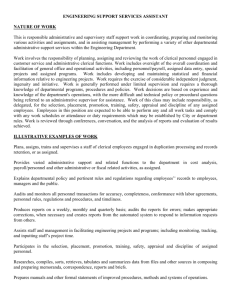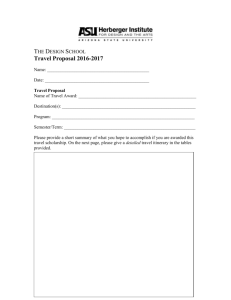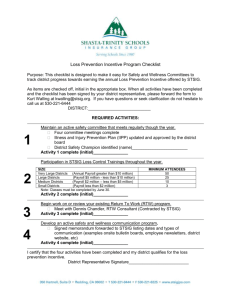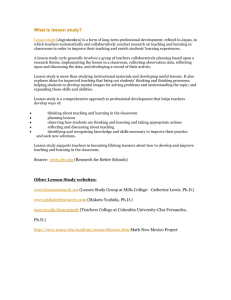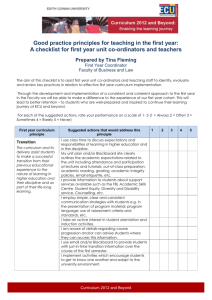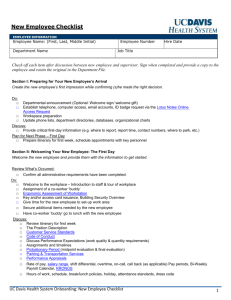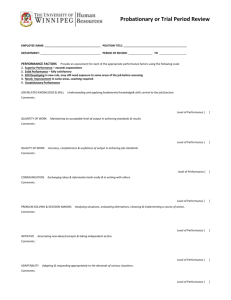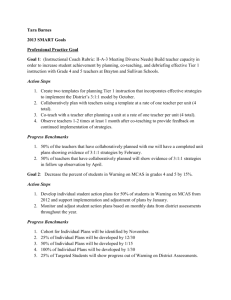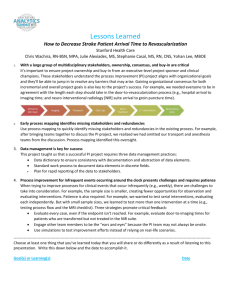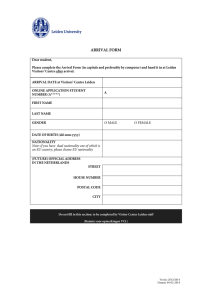departmental checklist for new employees
advertisement
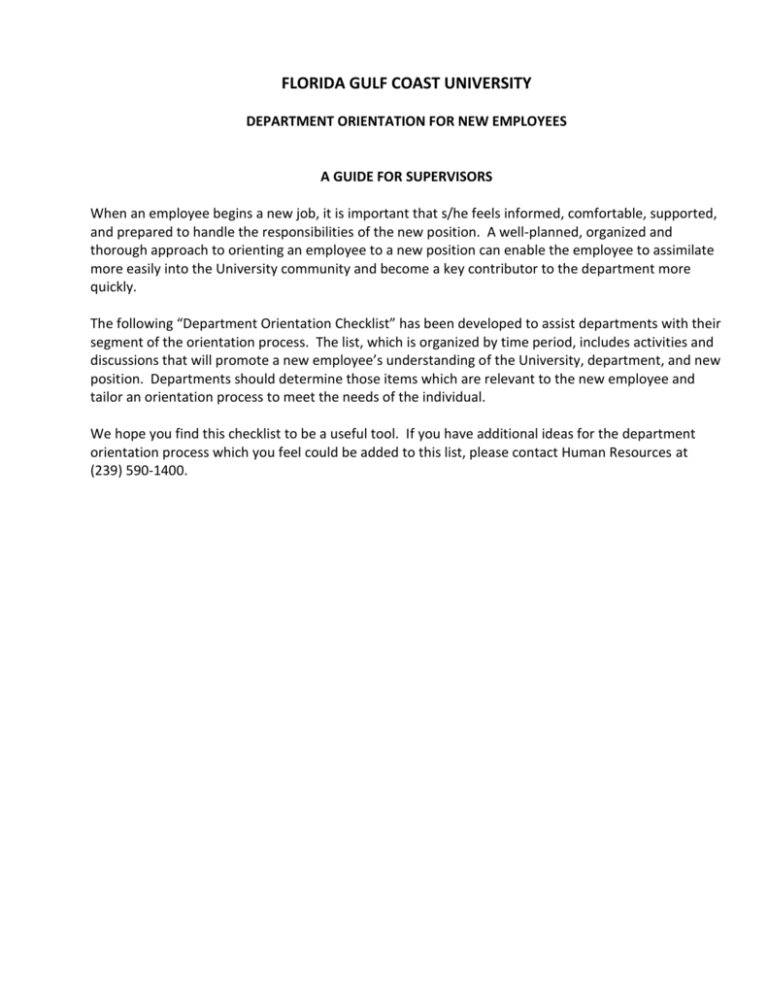
FLORIDA GULF COAST UNIVERSITY DEPARTMENT ORIENTATION FOR NEW EMPLOYEES A GUIDE FOR SUPERVISORS When an employee begins a new job, it is important that s/he feels informed, comfortable, supported, and prepared to handle the responsibilities of the new position. A well-planned, organized and thorough approach to orienting an employee to a new position can enable the employee to assimilate more easily into the University community and become a key contributor to the department more quickly. The following “Department Orientation Checklist” has been developed to assist departments with their segment of the orientation process. The list, which is organized by time period, includes activities and discussions that will promote a new employee’s understanding of the University, department, and new position. Departments should determine those items which are relevant to the new employee and tailor an orientation process to meet the needs of the individual. We hope you find this checklist to be a useful tool. If you have additional ideas for the department orientation process which you feel could be added to this list, please contact Human Resources at (239) 590-1400. DEPARTMENT ORIENTATION CHECKLIST Before the arrival of a new employee: A department can prepare for a new employee’s first day of work by completing the following activities: Complete appropriate form to establish new employee on payroll system Set up email account and network access Set up telephone; notify Telecommunications for employee’s telephone directory listing Prepare employee’s office area and provide basic supplies Inform department staff and key contacts of the employee’s arrival date Prepare itinerary for the employee’s first day/week Order business cards for the new employee First day of employment: The following activities will help to ensure that the new employee feels welcomed and comfortable on the first day of the job: Hiring manager welcomes new employee upon arrival Escort to employee’s office space Introduce new employee to co-workers (and direct reports if applicable) Provide a tour of office Review employee’s itinerary for first day/week o First day of employment: Appointment in HR to complete required employment paperwork Provide keys to office, desk, etc. in accordance with department policy. Describe procedures for entering or locking work area, if appropriate. Make arrangements for employee to obtain ID card and parking permit during first week of employment. Review faculty/staff parking lots pertinent to office location. Provide telephone operational instructions Confirm hours of employment, vacation/leave of absence procedures, reporting procedures for unscheduled absences, timecard and overtime procedures (for non-exempt employees) Discuss pay schedule and check distribution procedures (if applicable). Introduce payroll custodian and discuss role. Ensure access to Gulfline and review information available Discuss job description and job responsibilities Provide copies of: o Department staff list / contact information o Department organization chart o FGCU Telephone Directory o Department policies and manuals o University publications (if applicable) First Week of Employment: During the first week of employment, a new employee should gain an understanding of the University, his or her department, and his or her job responsibilities. The following activities and discussions will help accomplish these goals: Meeting with department head to convey information such as: The department’s mission, goals and standards. Relate department mission to University’s mission. The department’s involvement in key University initiatives and projects The organizational structure of the department Departmental standards for confidentiality, teamwork, professional behavior, communication, customer service, etc. Timing and general procedures associated with performance appraisal and salary increase processes. If the new employee is a manager, discuss: Background, job goals, and performance of staff members Probationary policy (for USPS staff) and evaluations during the probationary period Timing and general procedures associated with employee performance appraisal and salary increase processes. Provide the new employee with: A plan for on-the-job training A meeting date and time to discuss employee’s job goals and performance standards. The department calendar and academic calendar (if applicable) A list of key meetings and department events, highlighting those in which the employee will be involved. A list of primary position-related University contacts and telephone numbers An established schedule of meetings with key people with whom he or she will work inside and outside the department. Names of important University resources An introduction to the personal computer, software, and the University and department websites. Information related to office protocols for telephone calls, email, voice mail, meeting scheduling, use of copy machine (including access code) and fax. Standard operating procedures for the department such as central filing, supply ordering procedures, mailing information and packages, department work rules. First Week of Employment (cont.) Provide the new employee with (cont.): Podium training and key (if applicable) Explain how to gain remote access to University systems from home or while traveling and protocols for using remote access and other computer-related resources. Discuss departmental safety policies and procedures Review emergency contact procedures Review holiday schedule First Month of Employment: Develop specific job goals and expectations collaboratively with the new employee. Goals should be written, prioritized and include time frames for completion. Expectations should be specific, measurable (when possible), and attainable. Agree upon timeframes for formal and informal evaluations of performance (i.e. six month, annual evaluation). Develop a plan for formal training. Take time to discuss the new employee’s impressions, feedback, and suggestions regarding his/her work experience thus far. Ongoing Activities: After the initial period of orientation and training, all employees have a need for ongoing feedback and development to encourage good performance and enable individuals to reach their potential. Supervisors should provide the following on an ongoing basis: Provide positive and negative performance feedback Encourage participation in work teams and department activities that will help employees diversify and develop skills. Collaboratively develop objectives and expectations on an annual basis. Collaboratively construct development plans that include formal and informal training opportunities. Provide employee with information regarding department direction and goals. Elicit feedback from employees regarding their performance, suggestions and concerns. Provide ongoing coaching and regular performance reviews.
